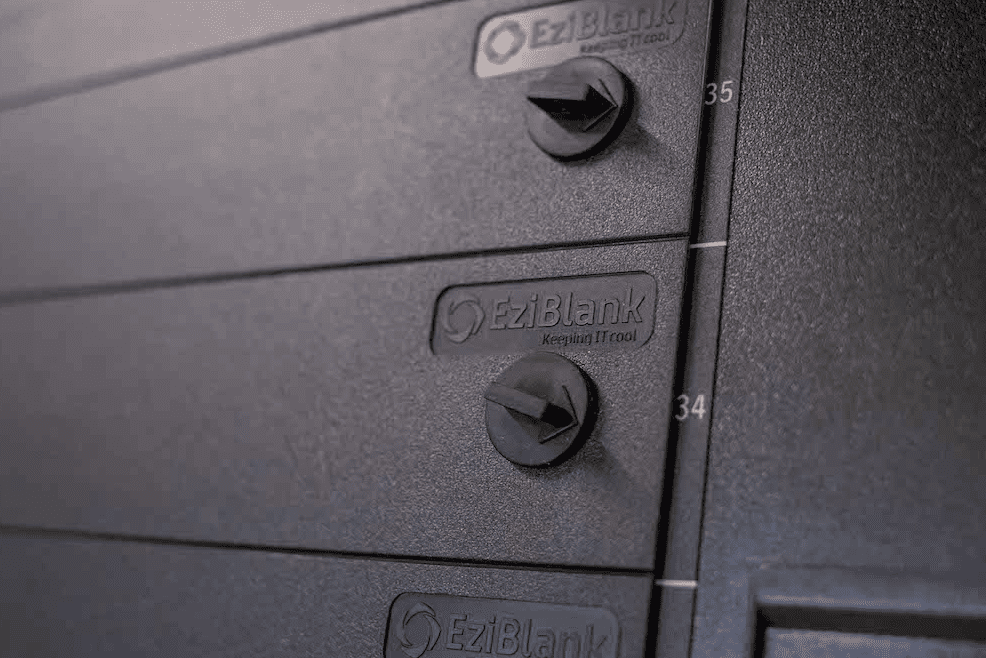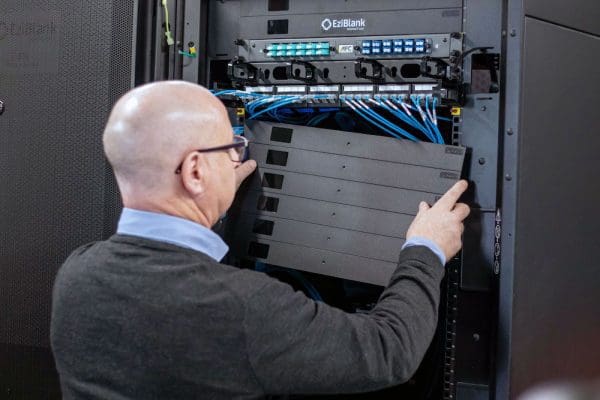The Complete Guide to Data Center Cooling
It’s no secret that data centers consume a lot of energy because of the computing power they use. These massive energy demands can cause many data centers to overheat without the proper equipment.
That’s why chilling systems for data centers are essential. Read on to learn more about data center cooling technologies and how they work.
In the article:
[—ATOC—]
[—TAG:h2—]
Why Do Data Centers Need Cooling?
Before you understand why data centers need cooling, you must first understand what data center cooling is.
In short, this process involves creating ideal operating conditions for data center equipment. Data centers need chilling because of their equipment’s high power demands. Some of this equipment includes power distribution units (PDUs) and uninterrupted power supply (UPS) battery systems.
How Are Data Centers Cooled?
A traditional data center gets chilled by a combination of a raised floor and computer room air handler (CRAH) or computer room air conditioner (CRAC) infrastructure. One of these two units will pressurize the area below the raised floor and drive cold air into the server intakes after it goes through the perforated tiles. The cool server intake air will exit as hot exhaust and return to the above-mentioned infrastructure for chilling.
However, this system is bad for energy efficiency in high-density data floors and lacks any fine-tuned control. Private data centers often rely on these traditional systems because they don’t have the resources to upgrade.
Modern data centers use various data center cooling technologies to sustain an ideal operating environment. Rising energy costs are an increasing concern for data center managers, so having the most efficient chilling system in place is essential.
Which Methods Are Used for Data Center Cooling?
Now that you understand the importance of chilling infrastructure, we can explore the types of data center cooling systems below:
● Calibrated Vectored Cooling (CVC)
A CVC system is designed for servers with high power densities. It streamlines the flow of air and lets the system manage heat more efficiently. As a result, data center owners can increase the number of circuit boards per server without using as many fans.
● Chilled Water System
This system uses chilled water to lower the temperature of the air brought in by air handlers.
● Cold Aisle/Hot Aisle Design
This system uses distinct hot and cold aisles to separate the chilled air from the heated server exhaust air. The cold aisles have cold air intakes in the front, and the hot aisles have hot air exhausts in the back. The hot aisles push warmer air into the air conditioning intakes for chilling.
Note: Data center owners should always be aware of empty cabinets if they have cold and hot aisle containment solutions. If there are empty cabinets in your system, the hot exhaust air can find its way back into your cold aisle. Be proactive about this issue, and you can prevent wasted cold air
● CRAC
Computer room air conditioning systems are very much like conventional air conditioners powered by a mechanical device that takes air across a refrigerant-filled cooling unit.
This equipment takes up a great deal of data center space, but it’s relatively affordable.
● CRAH
A CRAH unit operates as part of a larger system that involves a chilled water plant inside the facility’s cooling plant. The chilled liquid makes its way through a cooling coil inside the unit and extracts air from outside the building using modulating fans.
With this system, you must be careful of leaks around cable openings, as they can push cold air out and allow it to escape.
● Direct-to-Chip Cooling
These chilling systems deliver liquid coolant directly to a cold plate using pipes. A chilled-water loop is responsible for in-rack heat extraction and transports the heat to the building’s chiller plant.
● Free Cooling
Free cooling data center floor systems take advantage of the outside atmosphere to present cooler air into the servers. This air cooling technology will only work in specific climates, but it’s great for energy efficiency in the proper conditions.
● Immersion System
Immersion cooling involves the use of a dielectric fluid. The dielectric fluid absorbs heat when managers submerge their hardware in a bath of this non-flammable, non-conductive liquid. A leak-proof case contains both the fluid and the equipment.
● Liquid Cooling
This term is broad, as it encompasses any chilling technology that uses liquid to extract heat from the air and maximize power usage effectiveness.
● Raised Floor
This concept is one of the most innovative data center cooling options. It’s a frame that elevates the data center’s floor. The empty space contains water-chilling pipes and promotes better airflow.
Do Data Centers Use Cooling Towers to Produce Cold Air?
Evaporative cooling technology is the primary type of system that uses chilling towers.
This system works by introducing hot air to water, resulting in the water evaporating. The water extracts the heat from the air and makes its way into the system via a wet filter or misting system.
As you could probably infer, this system requires a lot of water. It also demands the use of chilling towers to expedite evaporations and carry excess heat to the outside atmosphere.
Data Centers & Liquid Cooling Systems
Air chilling methods are widespread, but data center cooling technology involving liquid is becoming increasingly popular. Learn more about the liquid methods below:
● How Does Liquid Cooling Differ From Traditional Systems?
Data centers that use liquid chilling are more efficient, unlike air-cooled data centers. Also, unlike air cooling systems, liquid ones don’t introduce condensation and pollutants, so they’re much cleaner.
● AI Energy Demands for a Data Center Cooling System
Efficiency is a major concern for data centers. Modern processors must run powerful ML and AI programs, and the process generates a lot of heat.
Liquid cooling technologies must keep up with the high energy usage. Without a liquid cooling system’s operation working seamlessly, a facility will be at risk of overheating and experiencing damaged equipment.
● High-Density Server Demands
Some data center facilities don’t implement ML and AI, but they still need a way to control heated air. But a traditional system like this can still have a high storage and rack density, so it’s essential to have the right chilling equipment on hand.
Four Considerations for an Optimal Cooling System
As you’re implementing efficient cooling solutions, you should approach the process with caution to protect your data center environment. Here are four essential considerations to make:
1. Implement Containment Measures
You can strategically install doors and walls to direct air flow. Your efforts will reward you with reduced energy consumption and higher rack densities.
2. Use Hot Aisle/Cold Aisle Design
Use hot/cold aisle pathways to expel warm air into the AC intakes. The most efficient cooling systems feature alternating hot-cold rows, as this setup makes the chilling process more efficient and limits the waste of cool air.
3. Inspect & Seal Leaks
If you have a liquid system, you need to take water damage seriously. Even a small can inflict substantial damage on your data center cooling infrastructure. Inspect for leaks regularly and seal them as soon as you discover them.
4. Synchronize Humidity Control Points
Some chilling systems incorporate outside air to increase efficiency, but this strategy can introduce excessive moisture. Stay on top of your building’s climate control settings and ensure they account for outside humidity.
Data Center Cooling Technologies
Are you looking to increase efficiency in your facility?
There are a range of devices and equipment designed to keep your data center cool from brush and blanking panels to high-air-flow floor tiles and modular walls .
Take a look at our solutions to build the optimal chilling system for your data center and enjoy some of the best cooling technologies on the market.


